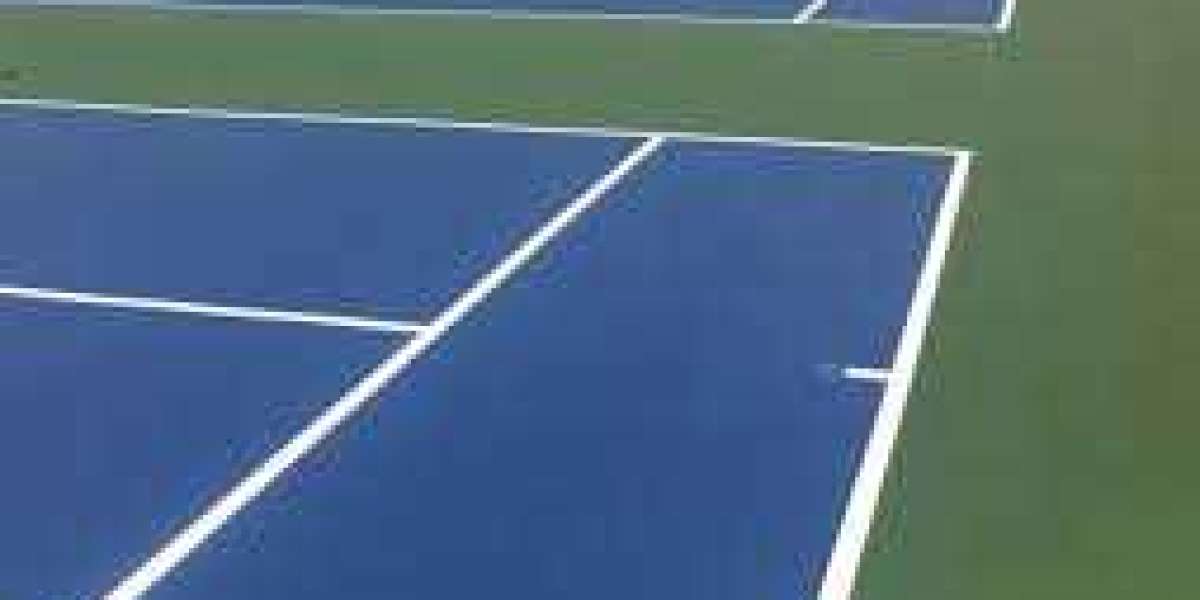Tennis isn’t just a sport — it’s a lifestyle, a way to connect with friends, challenge yourself, and enjoy the outdoors. Whether you’re a casual weekend player or an aspiring pro, having access to a well-built court can make all the difference. And while playing is the fun part, there’s an entire world behind the scenes that goes into making that smooth, perfectly lined surface you love. That’s where tennis court construction comes in.
Why Build a Tennis Court?
For schools, sports clubs, hotels, or community centres, a tennis court can become a centrepiece for social activity. It’s a place where kids learn teamwork, adults get their daily dose of exercise, and families gather for weekend matches.
Choosing the Right Location
The first big decision in tennis court construction is location. You need a space that’s flat, has good drainage, and gets enough sunlight without excessive glare. Ideally, the court should be oriented north-south to prevent players from looking directly into the sun during morning or evening matches.
If you’re building in a residential area, also think about noise and privacy. Strategically placed hedges, fences, or even sound-absorbing walls can make the space more enjoyable for everyone.
Picking Your Surface
This is where it gets interesting — there’s no “one-size-fits-all” surface. The choice of surface affects speed, bounce, maintenance needs, and even injury risk.
- Hard courts – Made from asphalt or concrete with acrylic coatings. They’re durable, low maintenance, and provide a consistent bounce.
- Clay courts – Slower game speed, great for baseline players, and easier on the joints. But they need regular upkeep.
- Grass courts – The fastest surface, offering a classic Wimbledon-style feel, but they’re high-maintenance and weather-sensitive.
- Synthetic turf – Offers a softer feel and lower upkeep compared to natural grass.
The choice often comes down to budget, climate, and personal preference.
The Construction Process
- Planning Permits – Before breaking ground, you’ll need to check local regulations, secure permits, and work with a qualified contractor.
- Excavation Grading – The land is cleared, levelled, and graded to ensure proper drainage.
- Base Installation – A solid foundation is critical. Depending on the surface, this could involve layers of crushed stone, asphalt, or concrete.
- Surface Application – This is where your chosen material comes in. It’s installed and finished to ensure the right texture and performance.
- Fencing Lighting – Fences keep balls in play and add security. Lighting allows for evening matches and extends court usage.
- Lines Accessories – Painted lines, nets, and seating areas give your court the final touches.
Sustainability in Modern Tennis Court Construction
Today, many projects incorporate eco-friendly features. Permeable surfaces reduce water runoff, LED lighting cuts energy costs, and recycled materials minimise environmental impact. With sustainability becoming a bigger priority, it’s possible to build a court that’s both high-quality and environmentally responsible.
Maintenance Tips
Even the best court won’t stay perfect without regular care. Here’s how to keep it in top shape:
- Sweep away debris regularly.
- Repair cracks or surface damage quickly to prevent further deterioration.
- Pressure wash hard courts occasionally to remove dirt and stains.
- For clay courts, keep them watered and rolled to maintain firmness.
A little maintenance goes a long way in protecting your investment.
Cost Considerations
Building a tennis court is an investment — costs can range from moderate to high depending on materials, size, and location. Hard courts are generally the most budget-friendly, while grass courts require ongoing maintenance that can add to yearly expenses.
Many clubs and communities offset costs by renting the court for tournaments, lessons, or private events. If you’re building at home, consider it a long-term asset that adds value to your property.
The Social Side of Tennis Courts
A well-designed tennis court isn’t just a sports facility — it’s a gathering place. From community tournaments to family doubles matches, a court creates opportunities for connection, fun, and healthy competition.
Even social media plays a role here — imagine snapping a golden-hour shot of your game, sharing it with friends, and inspiring others to join in. A beautiful court can become an Instagram-worthy feature in its own right.
Final Thoughts
Tennis court construction is a blend of engineering, design, and passion for the sport. It’s about more than just laying a surface — it’s about creating a space where friendships form, skills grow, and memories are made.
Whether you’re a school looking to inspire the next generation, a community aiming to promote healthy living, or an individual chasing your dream court, the right planning and quality construction will pay off for years to come.
So grab your racket, gather your friends, and get ready to step onto your very own slice of tennis paradise.


